
Learn to Start Instructor Development begins with the transition from teachers of knowledge to mentors of skill. Instructors gain confidence in their value and have more transparent outcomes in their classrooms as they begin to mentor students as individuals with unique value and become experts on student formative development, rather than on subject content.
Learn to Start instructors fit specific criteria. The evaluation process allows transparency between Learn to Start and prospective instructors to determine fit.

Prospective instructors complete the online instructor profile. Upon completion, instructors receive an analysis detailing their alignment with Learn to Start pedagogy and their ability to be successful in a LTS classroom.
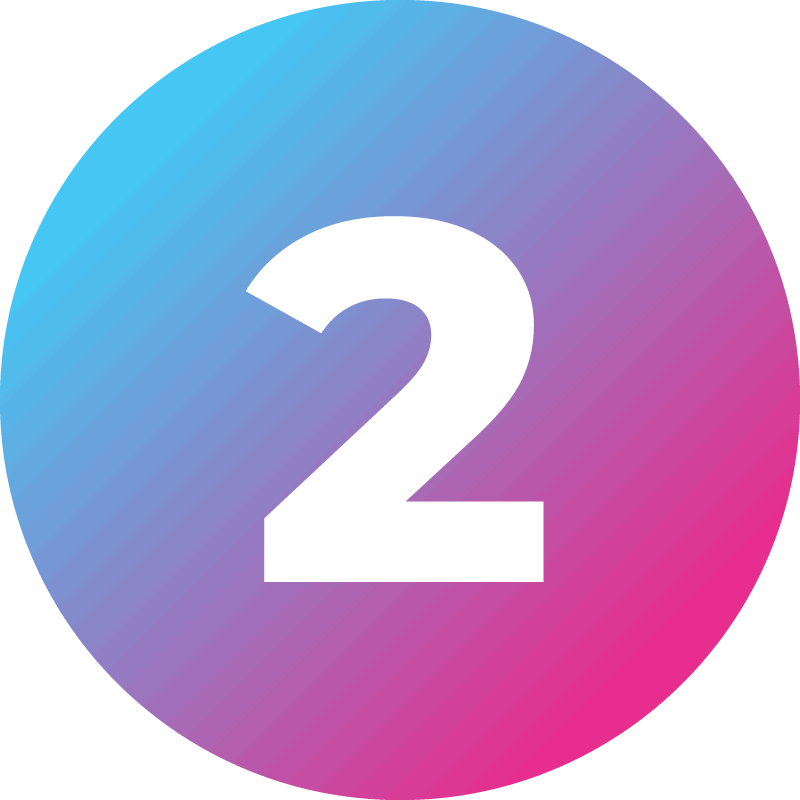
Prospective instructors who receive a successful alignment will be scheduled for a video conference call with Learn to Start to confirm alignment.

The evaluation process culminates with a three day, in-person workshop in which prospective teachers walk through the first section of the curriculum, meet with industry leaders, and gain access to the LTS EDU platform.
Instructors need a support system that builds their confidence and increases their value while allowing for transparent assessment of their ability to accomplish the required outcomes.

LTS Instructors complete the training program on the LTS EDU platform prior to the first day of school.

LTS Instructors complete the Instructor Debrief for each curriculum task throughout the school year.

LTS Instructors meet with the LTS Education team quarterly to ensure consistency of instruction.
As mentors inside the classroom, Learn to Start Instructors need to continue to develop their own market-readiness and awareness of current industry trends and needs.
LTS Instructors must earn the LTS Industry Certification by the end of their second year of instruction.

LTS instructors work towards their Certification inside of the LTS Platform, where they begin to draw direct connections between industry demands and their students’ outcomes.

Inside of the Mentorship Journal, instructors complete the Market-Ready Guidance section which provides action-based tasks centered on industry expert master classes.

Inside of the Mentorship Journal, instructors complete the Research to Market section in which they conduct customized research inside of their industry to follow thought leaders inside of education.
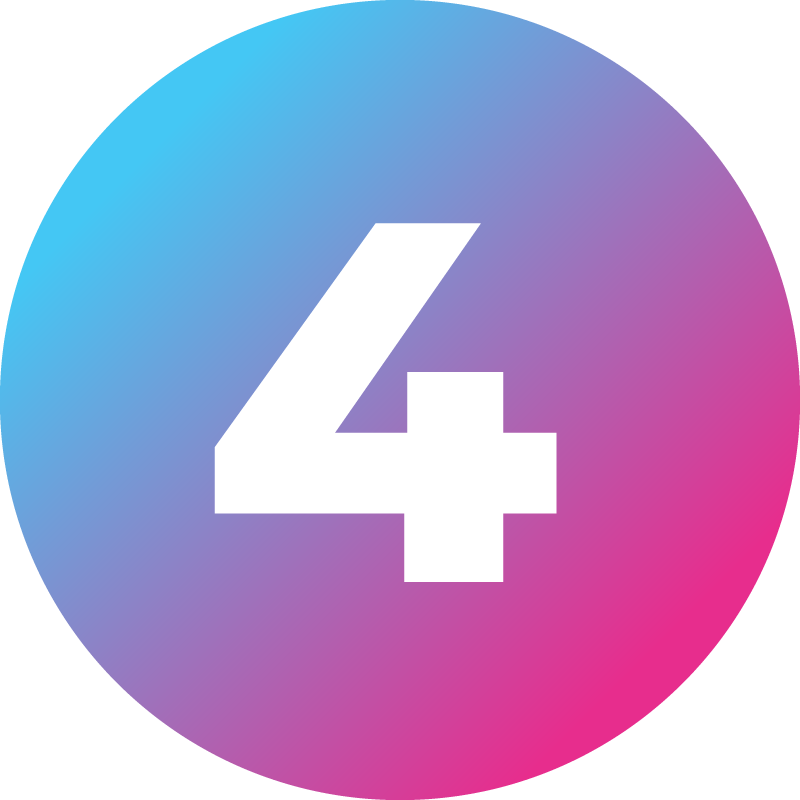
Inside of the Mentorship Journal, instructors complete the Network section in which they create a network of guest speakers who can share their story and offer feedback to their students.
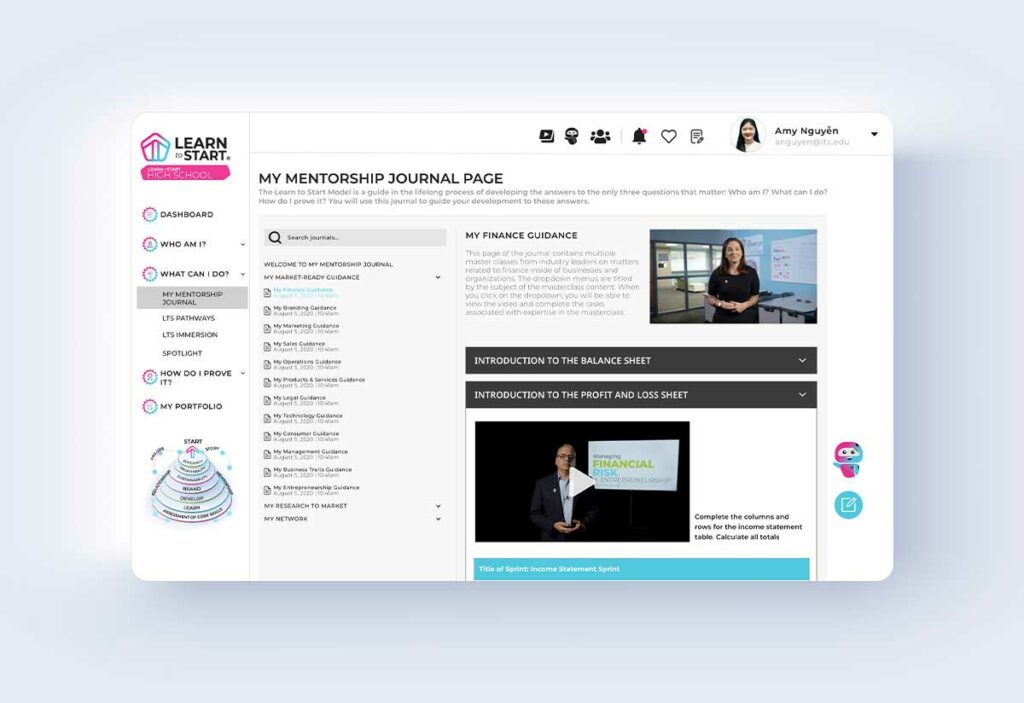
The Learn to Start Program provides a comprehensive Training and Curriculum Guide that walks instructors through the foundational pedagogy and step-by-step implementation of the curriculum.
Instructors have access to real-time data that reflects on their own usage of the platform, their students’ usage of the platform, and the outcomes their students are experiencing in their class.

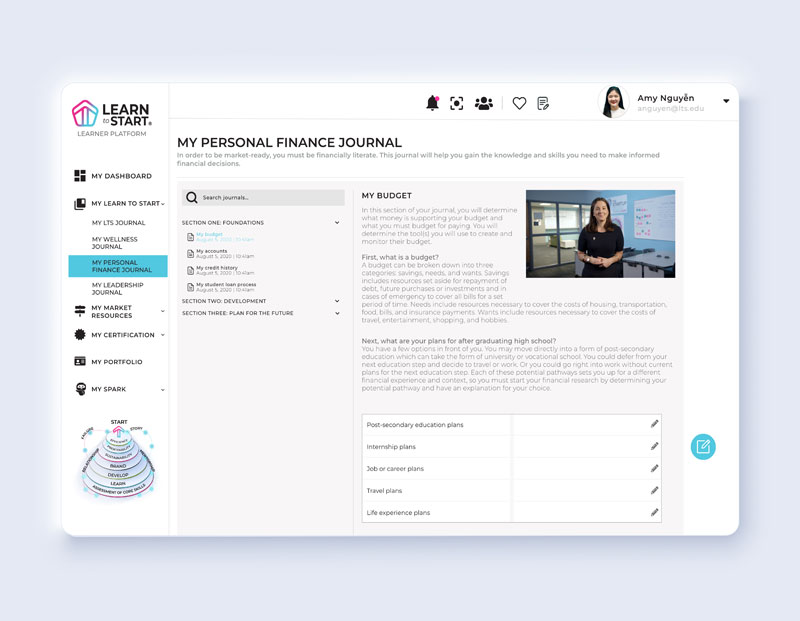
The Instructor and Learner Platforms are interconnected so instructors can view all student accounts, their portfolios, their journals, provide direct feedback, and work with them through the certification process.
They have access to the same market-based resources, and instructors can model their own market-readiness using the platform in the same way students use it.
Instructors use the Certification Guide to mentor students through the certification process. The skills and their requirements for proving proficiency are clearly defined and explained.
Instructors provide feedback and determine if a student has proven proficiency leading to their submission to Learn to Start for certification.
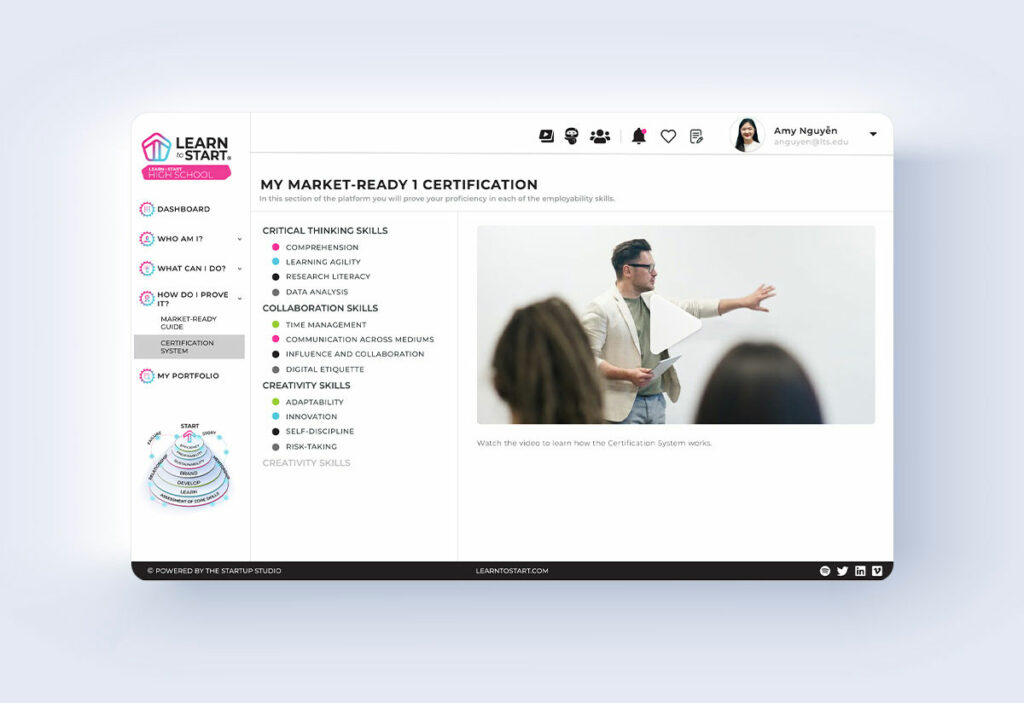
Administrators complete an online training program to lead the LTS program at their schools, and they gain access to a client portal giving them full transparency of their students and teachers. LTS conducts ongoing audits of school outcomes for its teachers and students to assess administrator performance.
LEARN TO START
connect with us
Get in touch and ask us a question about any aspect of Learn to Start.
This site is protected by reCAPTCHA. The Google Privacy Policy and Terms of Service apply.
© Startup Studio LLC | All rights reserved | Legal Policies